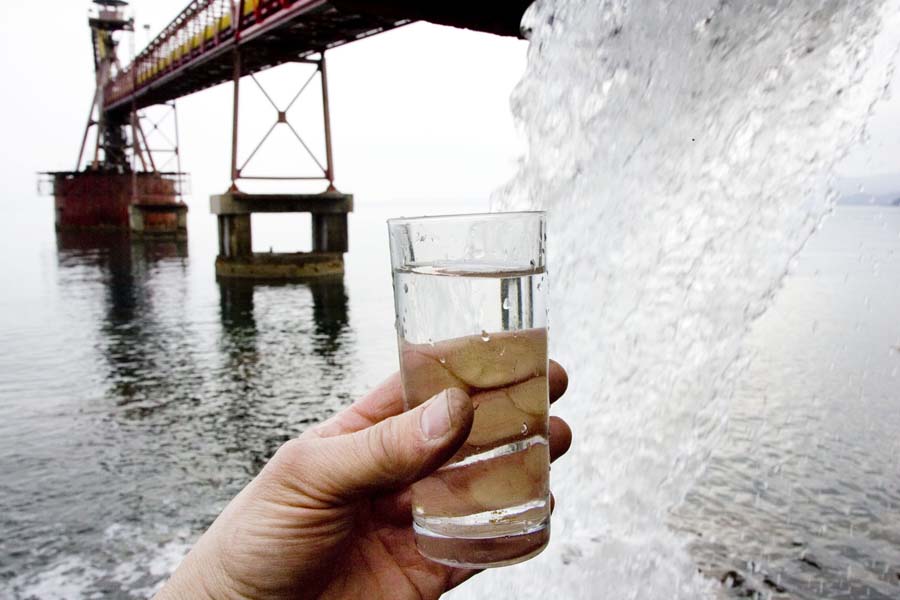The website of “Hellas Gold” will be available from mid-March, allowing anyone who has Internet access to follow online data concerning the soil, water, atmosphere and the overall environmental quality in the area of Halkidiki where the company operates. Measurements are performed using special instruments and measuring stations that have been installed in the area and – according to the company – constitute the largest and most comprehensive monitoring system that has ever operated in Europe and one of the largest worldwide. It is a three million Euro investment, for the operation of which the annual expenditure stands at 1.5 million Euros.
In fact, with just click on their computer or the screen of their mobile phone locals will be able to reach information at any time about parameters that affect their daily lives such as the weather, the clarity of the atmosphere, the amount of water running in the streams of their village. Technology is used to serve the environment and the people living in it and worrying about its quality.
The initiative is part of the Environmental Monitoring Program, which is implemented by “Hellas Gold” under the environmental conditions set by the state for the Cassandra Mines. This program records the parameters of the premises of each subproject (Olympias, Skouries, Mavres Petres – Madem Lakos, and Stratoni), as well as the quality of the environment in the vicinity of the works. In fact, “Hellas Gold” takes a step forward with the creation of the website. It provides a real-time online data feed, so that everyone can have access to the information and evaluate it.
In practice, the Program includes measurements concerning the air, water, soil, noise, vibrations, radiation and mining waste. Thus, through this great project the residents of the region will be given direct access to data regarding the quality of the environment in Northeast Halkidiki with total transparency and using scientific methods.
How does the atmospheric monitoring network work?
It is the flagship of the environmental monitoring program and it includes a network of three automatic continuous monitoring stations of the atmospheric environment in each of the seven villages of the area, which means a total of twenty-one monitoring stations in the Municipality of Aristotle. Indicatively, we must point out for comparison purposes, that the National Air Pollution Monitoring Network (EDPAR), which has been established by the Ministry of Environment and Energy, contains only twenty stations in the Prefecture of Attica and 13 additional stations across the rest of Greece.
The selection of the location of the dust emission monitoring stations was based on a special study conducted by the Aristotle University which is entitled “Study on the optimal location of air pollution measuring stations in the Cassandra Mines”.
Measured variables
The variables measured are the amount of particulate matter (dust) PM2.5 and PM10 found in the air, i.e. particles with an aerodynamic diameter less than 2.5 micrometres (μm) and less than 10 micrometers (μm), respectively. Particulate matter PM10 is promoted in the trachea and bronchi of our respiratory system, while the suspended particles PM2.5 affect the lungs and especially the so-called pulmonary parenchyma, i.e. the part of the lung that undertakes the gas exchange between the blood and the inhaled air. Measurements of the concentration of PM10 and PM2.5 are continuous, taking place every three minutes. The results depict the 24-hour average.
Moreover, particulate matter PM10 is also analyzed as to the concentration of trace elements Pb, Zn, Mn, Cd, As, Fe, Cu and Cr in accordance with the limits specified in the standard EN14902. The sampling for the analysis of the PM10 has a 24-hour duration and it is performed approximately twice a month.
In addition to this, gasses are also analyzed and recorded continuously, particularly carbon monoxide (CO), nitrogen oxides (NO, NO2, NOx), sulfur dioxide (SO2) and hydrogen sulfide (H2S).
All these measured parameters are combined at any time with the weather of each settlement as sensors have been installed in the stations for the continuous measurement and recording of a series of meteorological parameters, including rainfall, temperature, relative humidity, wind speed and direction, barometric pressure and evaporation.
source: http://greenagenda.gr

